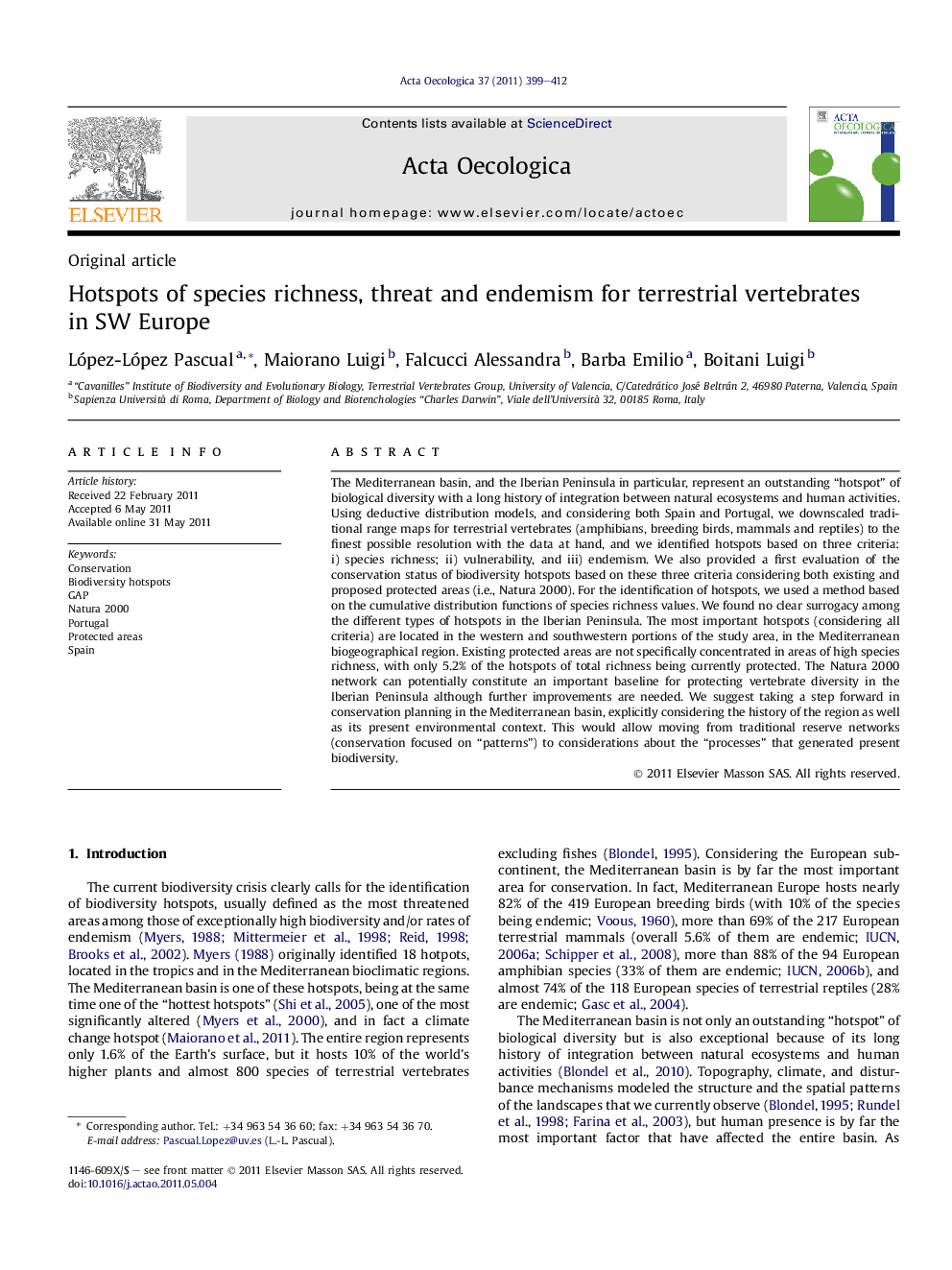| Article ID | Journal | Published Year | Pages | File Type |
|---|---|---|---|---|
| 4381362 | Acta Oecologica | 2011 | 14 Pages |
The Mediterranean basin, and the Iberian Peninsula in particular, represent an outstanding “hotspot” of biological diversity with a long history of integration between natural ecosystems and human activities. Using deductive distribution models, and considering both Spain and Portugal, we downscaled traditional range maps for terrestrial vertebrates (amphibians, breeding birds, mammals and reptiles) to the finest possible resolution with the data at hand, and we identified hotspots based on three criteria: i) species richness; ii) vulnerability, and iii) endemism. We also provided a first evaluation of the conservation status of biodiversity hotspots based on these three criteria considering both existing and proposed protected areas (i.e., Natura 2000). For the identification of hotspots, we used a method based on the cumulative distribution functions of species richness values. We found no clear surrogacy among the different types of hotspots in the Iberian Peninsula. The most important hotspots (considering all criteria) are located in the western and southwestern portions of the study area, in the Mediterranean biogeographical region. Existing protected areas are not specifically concentrated in areas of high species richness, with only 5.2% of the hotspots of total richness being currently protected. The Natura 2000 network can potentially constitute an important baseline for protecting vertebrate diversity in the Iberian Peninsula although further improvements are needed. We suggest taking a step forward in conservation planning in the Mediterranean basin, explicitly considering the history of the region as well as its present environmental context. This would allow moving from traditional reserve networks (conservation focused on “patterns”) to considerations about the “processes” that generated present biodiversity.
► The Iberian Peninsula is an outstanding “hotspot” of biological diversity. ► We identified hotspots based on species richness, vulnerability and endemism. ► There is no clear surrogacy among hotspots in the Iberian Peninsula. ► Existing protected areas are not concentrated in areas of high species richness. ► Improved Natura 2000 can constitute a baseline for protecting vertebrate diversity.
